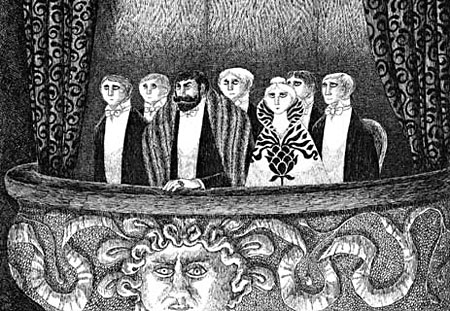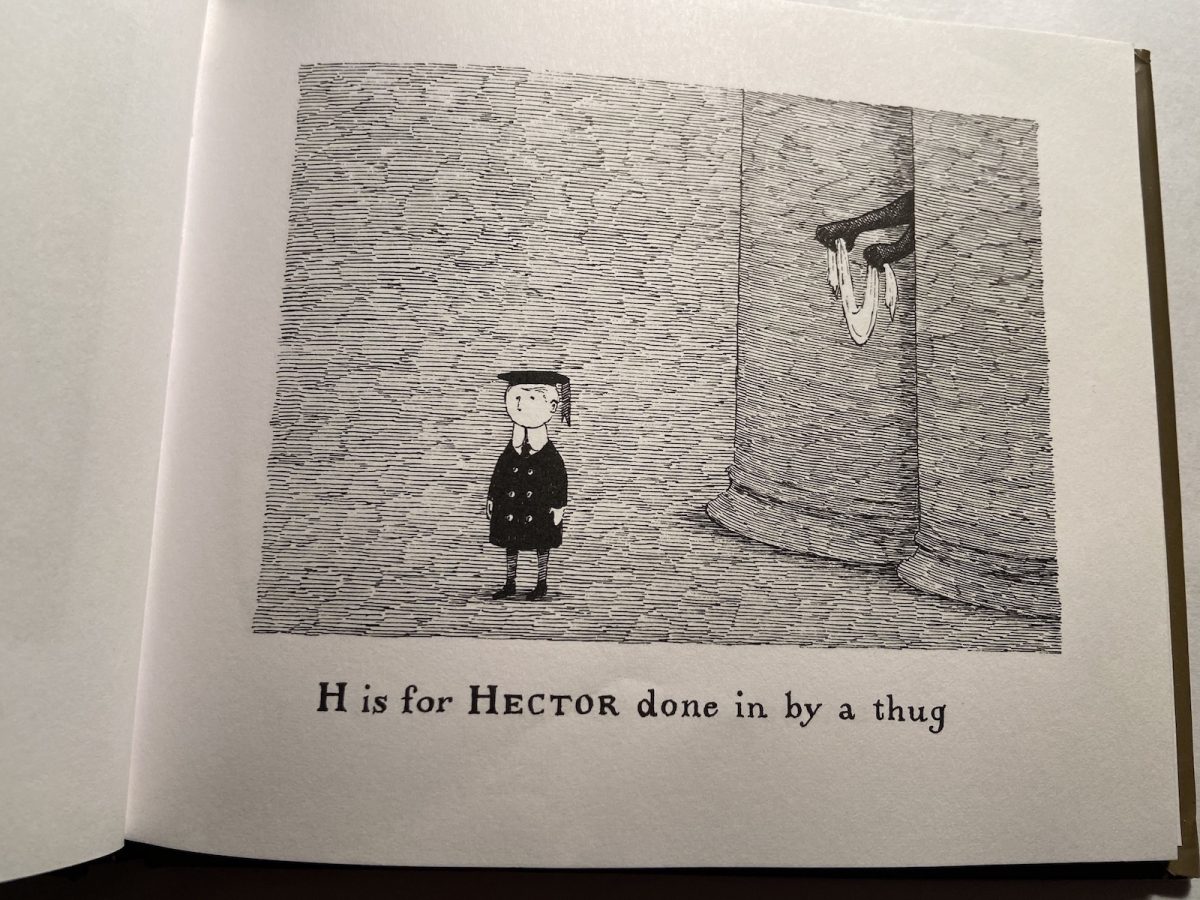


My two favourites are The Unstrung Harp (1953) and The Doubtful Guest (1957) (both found in Amphigorey). Gorey worked as an illustrator (also producing a lot of book covers) for some time before beginning to write and illustrate the short books he’s perhaps best known for, many of which were self-published by his Fantod Press, (some appearing under anagrammatic or punning pseudonyms), and which have subsequently been collected in a series of bumper volumes Amphigorey, Amphigorey Too, and Amphigorey Also. Gorey’s is both a ready-made archetypal world, and a world entirely his own, an abandoned nursery room of the imagination, where yesteryear’s toys, ill-used and left to collect spiderwebs, have attained both life and malignancy. Part of the fun of his pseudo-pastiche style is that his books feel like they might have actually existed in the past, and might now be considered curios or classics of a bygone age, unconsciously horrific beneath their air of gentility. His strain of nonsense - bringing to the forefront the often too-casual-to-see violence & horror depicted in the works of Edward Lear and Lewis Carroll - veers at times towards the purely surreal, but also borrows from that Roald Dahl-like reaction to moralising children’s literature that’s been going on at least since Struwwelpeter (1845, whose “ Dreadful Story of Harriet and the Matches” might be an episode in a Gorey book), if not before. There’s something instantly recognisable about his world of Edwardian Grimm.

His preoccupations are those of a man obsessed by the terrifying randomness of daily life: rocks and urns plummet from the sky without warning everyday objects suddenly turn menacing.” “His characters perform or endure unspeakable indecencies set against Victorian and Edwardian backdrops. I first came across mention of Edward Gorey in The Penguin Encyclopaedia of Horror and the Supernatural, and instantly knew I had to read him:


 0 kommentar(er)
0 kommentar(er)
